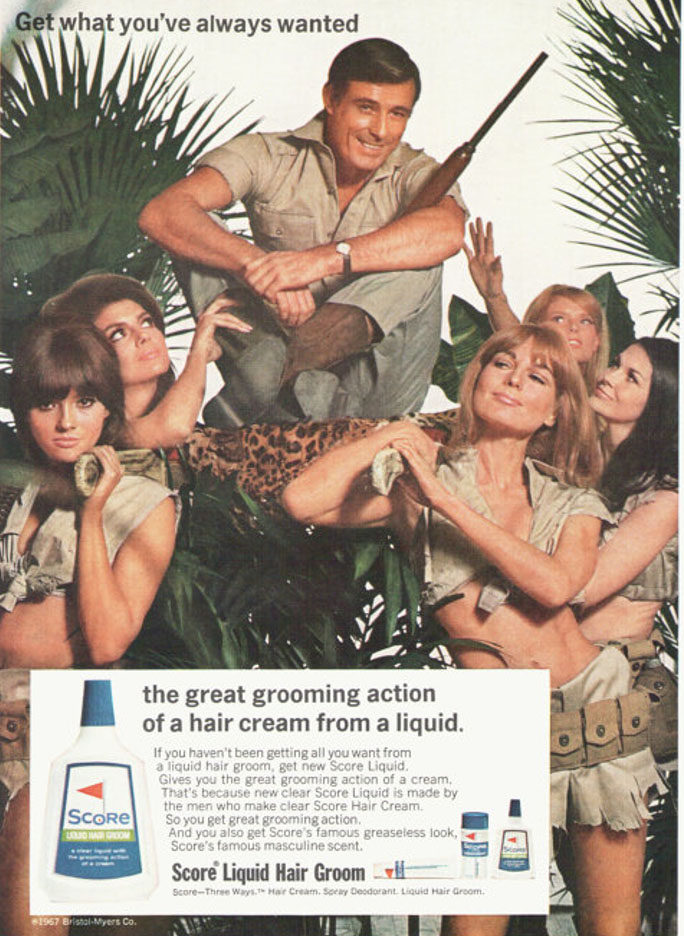The advert was produced in 1967. 1967 can be seen as a period of change in the UK with legislation on (and changing attitudes to) the role of women and men in society. Produced in the year of decriminalisation of homosexuality and three years before the 1970 Equal Pay Act, the representation of gender could be read as signalling more anxiety than might first appear. The reference to colonialist values can also be linked to social and cultural contexts of the ending of Empire. The contraceptive pill was introduced around this time.
It is important to know the context when studying the advert as the representations depicted in the advert can be read as signalling more anxiety than might first appear. The advert may be trying to reinforce traditional stereotypes and traditions at the time in order to calm those individuals who did not like the drastic changes that were occurring.
http://areejsmediablog1.blogspot.com/2018/03/advertising-score-case-study-and-wider.html
Hyper-masculinity in advertising
Hyper-masculinity is defined as: a psychological term for the exaggeration of male stereotypical behaviour, such as an emphasis on physical strength, aggression, and sexuality.
Advertising in the 1950s-1980s often featured a hyper-masculine representation of men and some representations in the media still do this today.
Gelfer: Changing masculinity in advertising
Joseph Gelfer, a director of masculinity research, suggests that the way masculinity is represented in advertising is changing. Looking at advertising over the last 20 years:
“Previously, masculinity was mostly presented in one of two ways: either a glamorous James Bond-style masculinity that attracted ‘the ladies’, or a buffoon-style masculinity that was firmly under the wifely thumb.
Thankfully, and somewhat belatedly, things are beginning to change.” (Gelfer, 2017)
Gelfer: Five stages of Masculinity
Gelfer suggests there are five stages of masculinity – how people perceive and understand what it means to be a man.
Stage 1: “unconscious masculinity” – traditional view of men
Stage 2: “conscious masculinity” – as above but deliberate
Stage 3: “critical masculinities” – feminist; socially constructed
Stage 4: “multiple masculinities” – anyone can be anything
Stage 5: “beyond masculinities” – it doesn’t exist
Jean Kilboure
Jean Kilboure is an activist in changing the image of women portrayed in the media.
“Indeed the very worst kind of man for a women to be in an intimate relationship with, often a truly dangerous man, is the one considered most sexy and desirable in the popular culture.”
― Jean Kilbourne, Can’t Buy My Love: How Advertising Changes the Way We Think and Feel
“Children growing up today are bombarded from a very early age with graphic messages about sex and sexiness in the media and popular culture.”
― Jean Kilbourne, So Sexy So Soon: The New Sexualized Childhood, and What Parents Can Do to Protect Their Kids
https://www.goodreads.com/author/quotes/27499.Jean_Kilbourne






